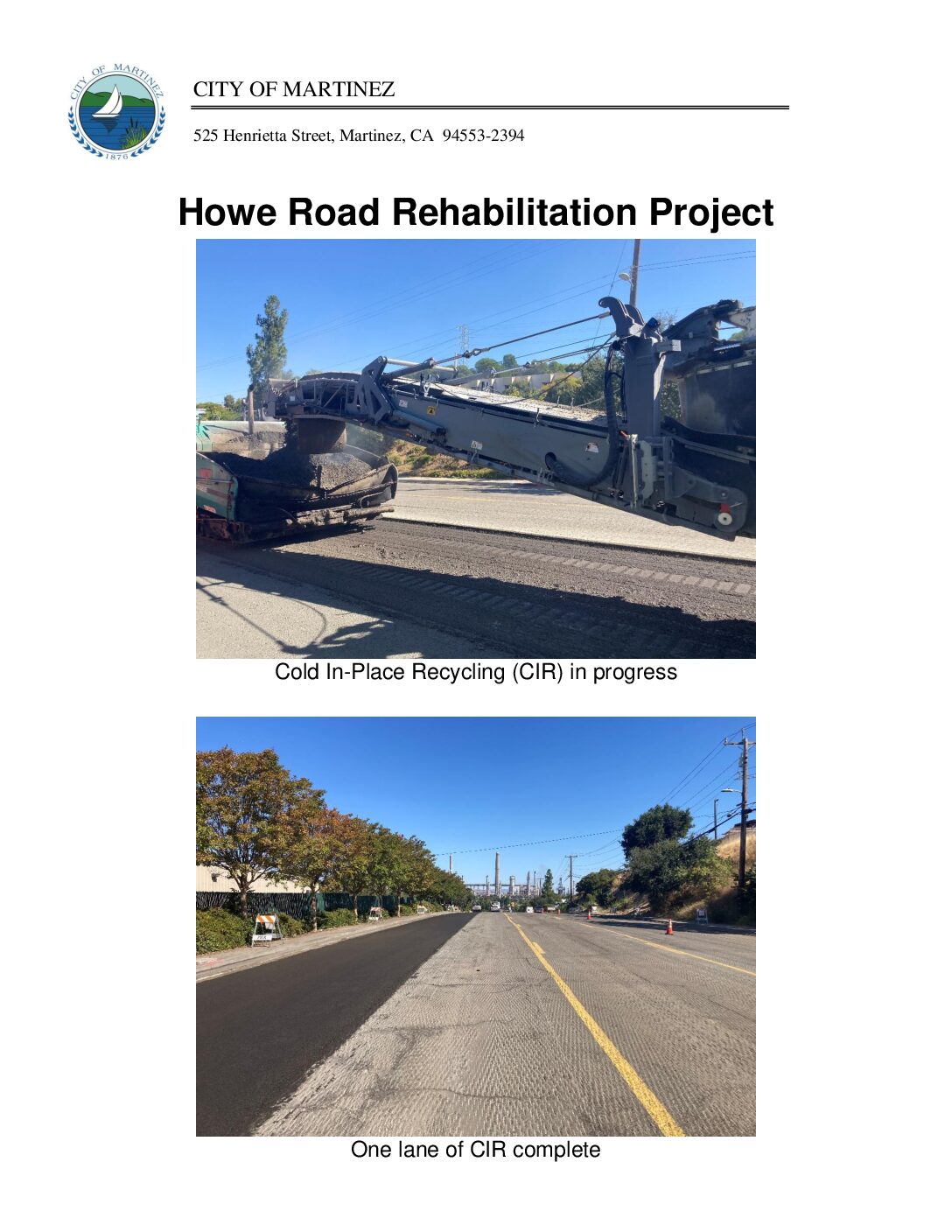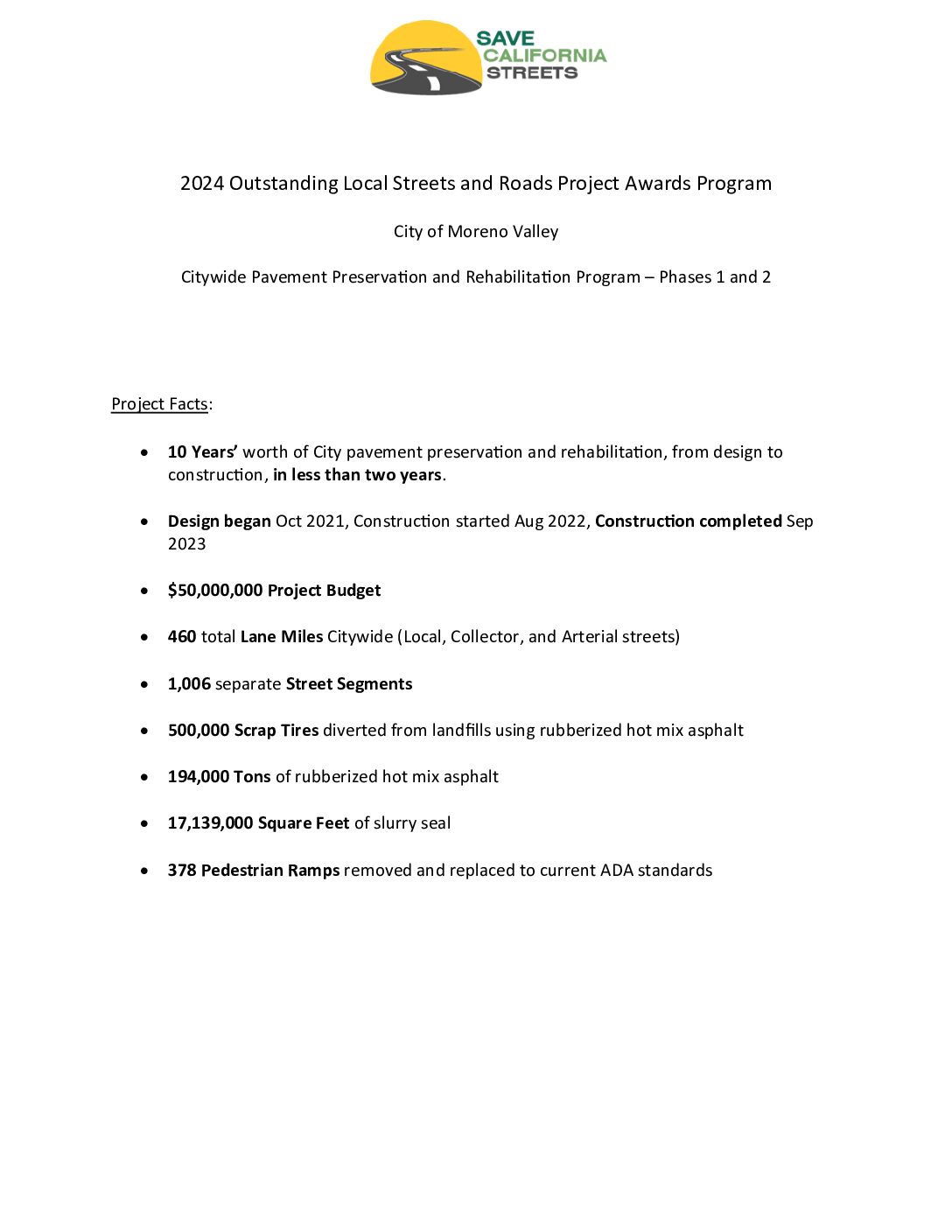Howe Road Rehabilitation Project
Location
Howe Road from Pacheco Boulevard to Vista Way, Martinez, CA
City or County Responsible for Project
City of Martinez
Category
Roads: Efficient and Sustainable Road Maintenance, Construction and Reconstruction Projects.
Description
The Howe Road Rehabilitation Project utilized a combination of cold in-place recycling (CIR) and rubberized hot mix asphalt (RHMA) to sustainably and efficiently reconstruct 1.2 miles, or roughly 380,000 square feet, of this high-traffic truck route through the City of Martinez. The Project scope involved milling 2” of existing asphalt, cold-in place recycling a 3.5” section of existing asphalt, placing a 2” RHMA overlay, and striping new buffered bike lanes to increase bicycle use, convenience, safety.
In addition, the City of Martinez partnered with the Recycling and Stabilizing Association of California (RSA) and our contractor MCK Services, Inc. to host a CIR Demonstration to promote education, innovation, and sustainability in the paving industry. The Demo involved an overview of the CIR process, an up-close view of the process during construction, a pavement lab tour, and a networking opportunity with 55-60 attendees from local agencies, Caltrans, and the UC Davis Pavement Research Center.
The City of Martinez Climate Action Plan identifies Transportation Improvements and Solid Waste Diversion as two specific strategies with the goals of reducing greenhouse gas emissions, shifting to renewable energy sources, and preparing for climate change.
The CIR process mills the existing asphalt pavement, mixes it with new additives, and recompacts it in-place. CIR directly supports the City’s Climate Action Plan by requiring fewer truck trips and therefore generating less CO2 emissions and causing fewer traffic impacts. CIR also requires less solid waste disposal, reduces virgin material usage, and provides cost savings for the City’s taxpayers.
RHMA uses crumb rubber made from scrap tires, which diverts tires from the landfill and minimizes the use of aggregate and asphalt. The Project used 20,189 passenger tire equivalents of rubber (242,266 pounds) from waste tires that were exclusively generated in California.
The City has received tremendous feedback from the residents on the pavement condition and ride quality, the sustainable processes utilized, and the addition of buffered bike lanes. Martinez looks forward to using these sustainable pavement rehabilitation techniques in future projects.
Project submitted by
Trevor McGuire
Associate Civil Engineer
City of Martinez
525 Henrietta St. Martinez, CA 94553
tmcguire@cityofmartinez.org
925-372-3502




